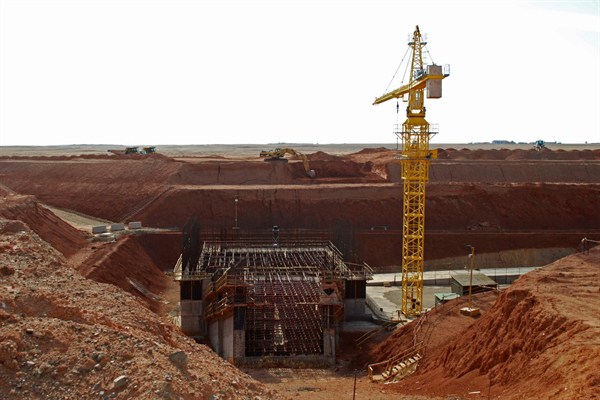Over the past few years, Mongolia’s once vibrant and high-growth economy, buoyed by mineral riches, has languished to the point that there are some legitimate concerns that the country is on its way to bankruptcy. The Mongolian currency, the tugrik, has plunged nearly 15 percent since the beginning of this year against the U.S. dollar. Foreign direct investment, once bountiful and rapidly growing, has completely evaporated. The economy is contracting; unemployment is spiking; and deflationary trends are continuing. Combined, that makes for a cocktail of trouble for the new government in Ulaanbaatar that has been in office since elections in June.
These pressures weigh heavy on Mongolia’s economic future, with its credit rating being slashed to a junk status “B” rating, its borrowing costs soaring, and, as a result, its debt soaring. Mongolia’s government now owes more than $3 billion, a massive amount for a small developing economy valued at around $12 billion per year, let alone one that is contracting. The lack of growth is limiting Mongolia’s ability to service its debt and pay its own bills, such as the salaries of civil servants or money for much-needed infrastructure projects. The steep decline in public revenue has also put pressure on Mongolia as its struggles to keep up a steady flow of fuel subsidies to offset the high cost of energy in the country. This has hit corporate interests in Mongolia especially hard, since they are large consumers of energy and depend on these subsidies.
Mongolia has been a test case of the resource curse, or the problems associated with states that are overly dependent on abundant natural resources. Although the International Monetary Fund values Mongolia’s mineral riches—mainly copper, gold and coal—at between $1 trillion and $3 trillion, most of that still remains untapped, belying the favorite moniker of foreign investors and international commentators for the country: “Minegolia.” Over the past decade, its economy has been one of the world’s fastest-growing, registering more than 17 percent GDP growth in 2011. But while impressive, that has almost exclusively been centered on its large supply of commodities, such as coal, copper and gold. Now, with commodity prices falling off a cliff after 2011, Mongolia’s overreliance on foreign direct investment and trade tied to minerals has mired it an economic pit.

